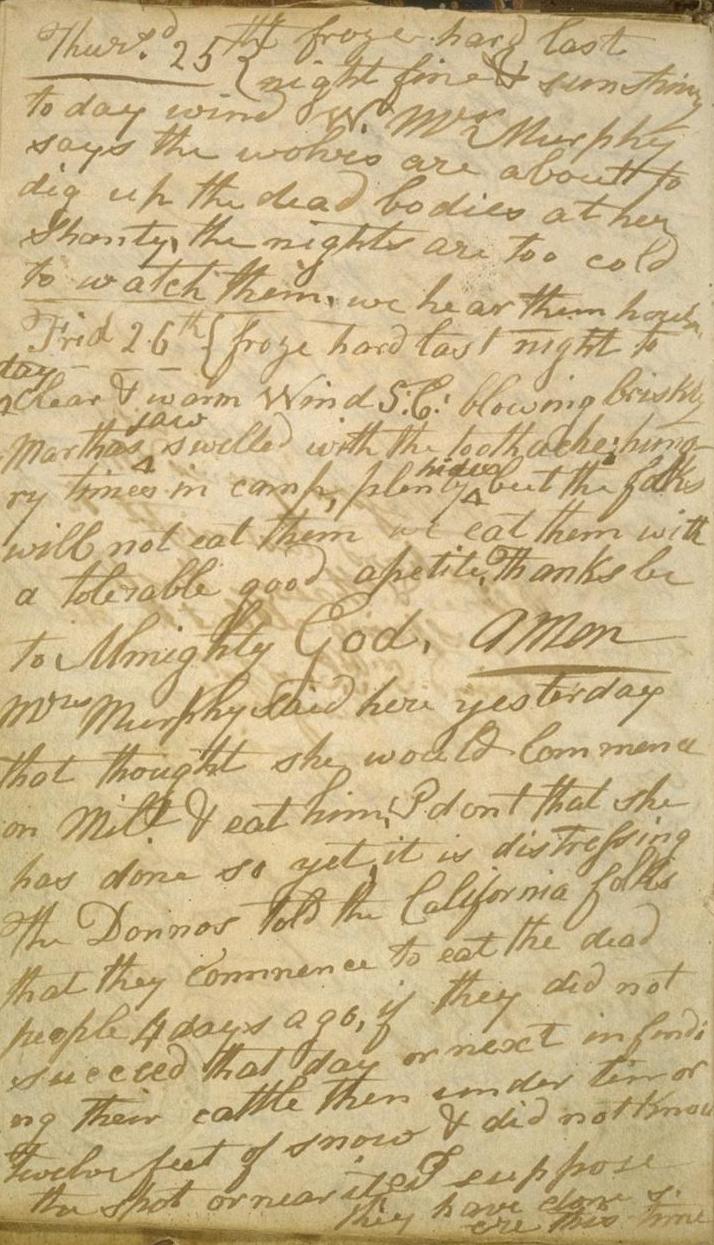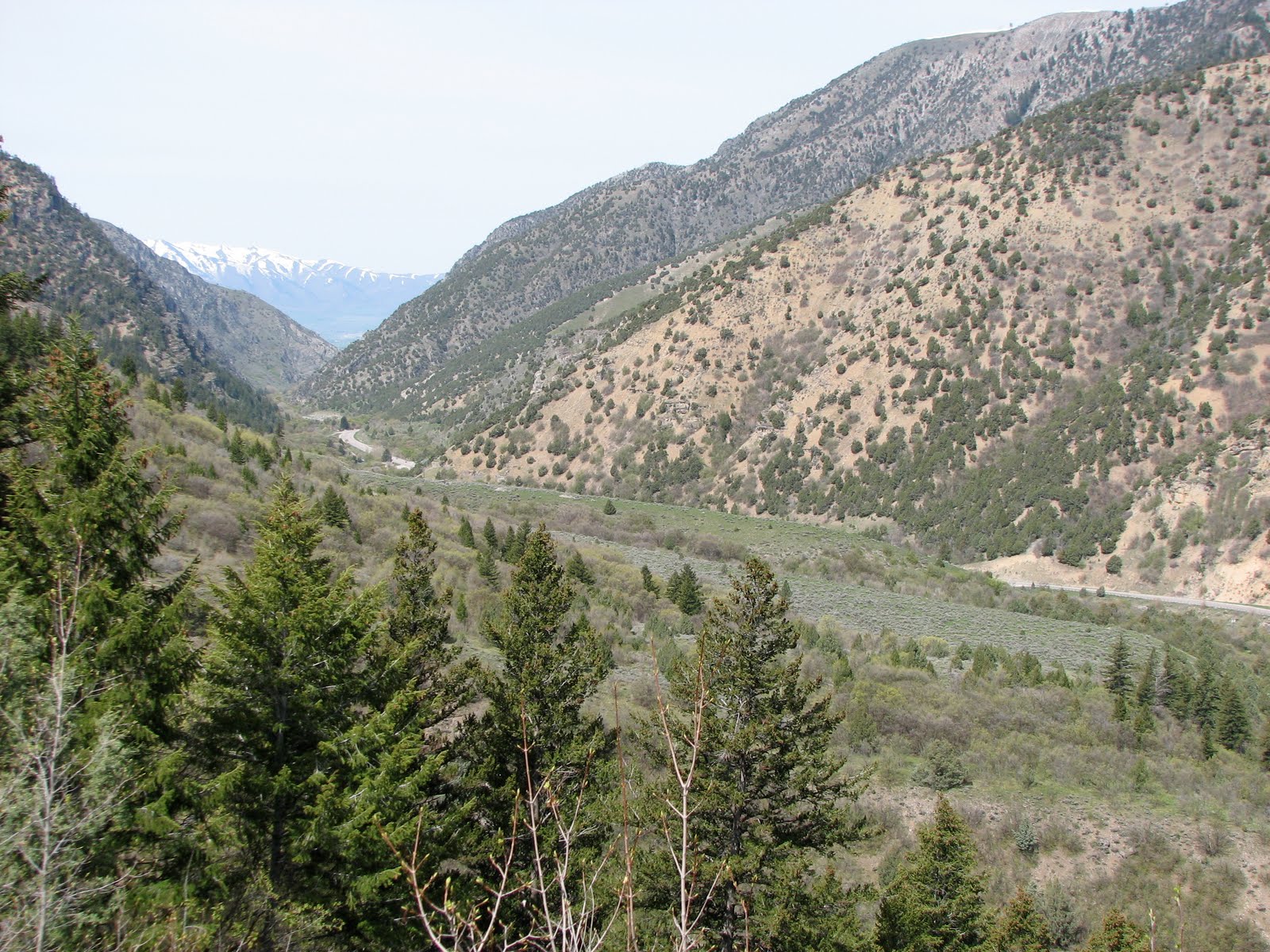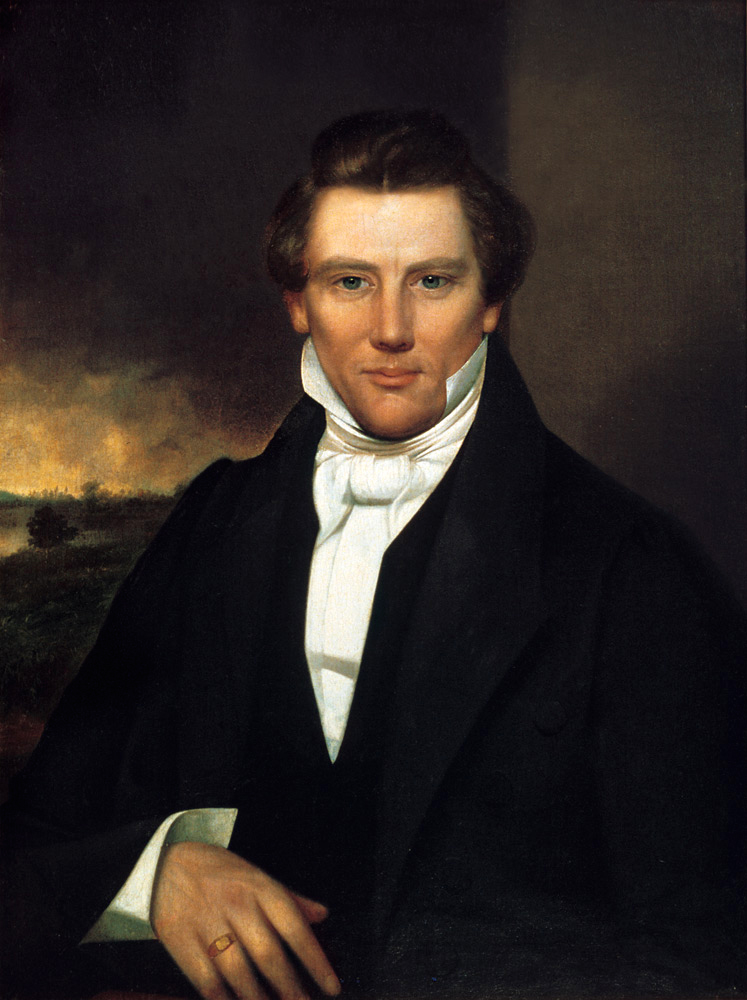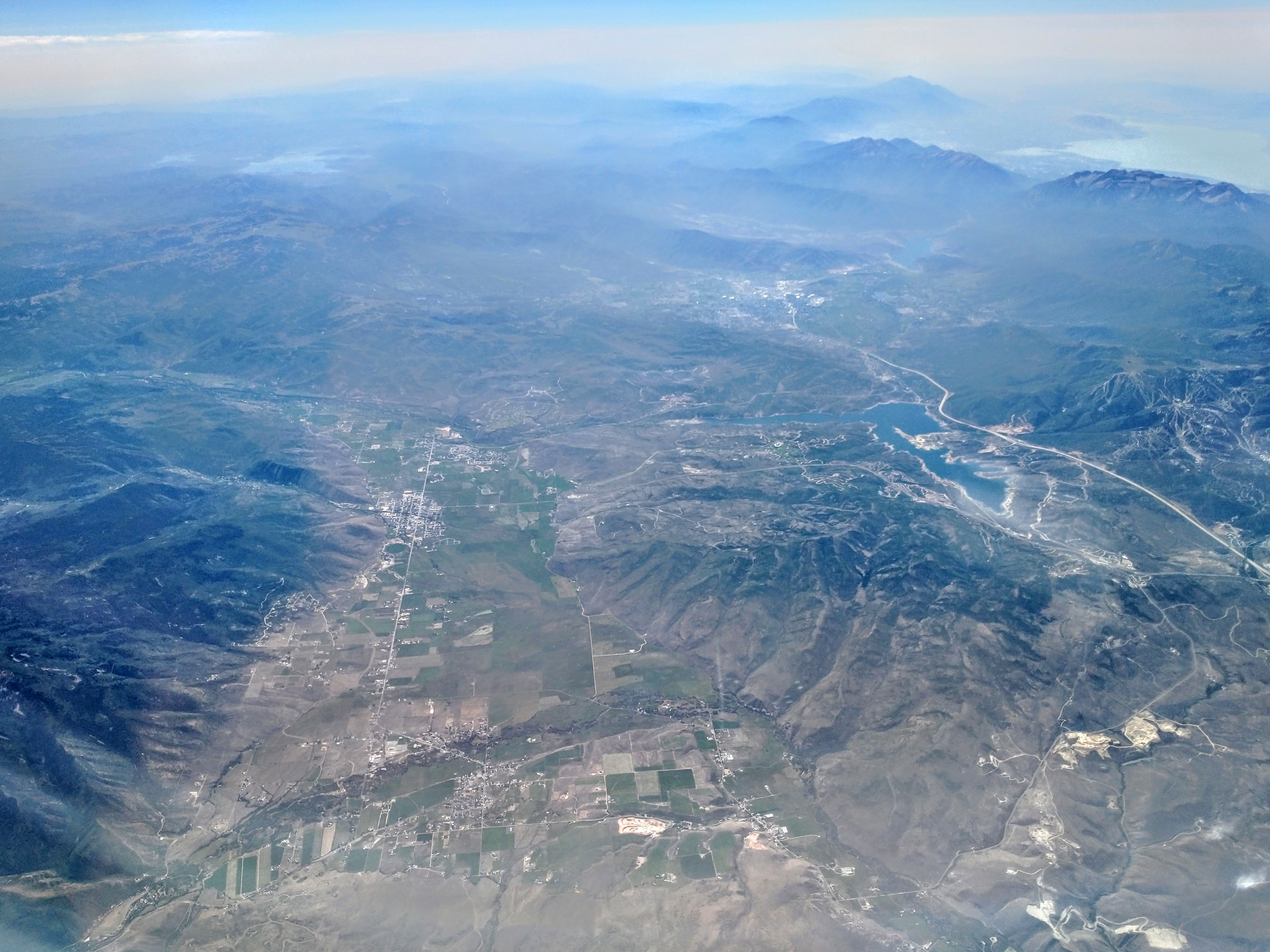|
Morgan County, Utah
Morgan County is a county in northern Utah, United States. As of the 2010 census, the population was 9,469. Its county seat and largest city is Morgan. Morgan County is part of the Ogden- Clearfield, UT Metropolitan Statistical Area as well as the Salt Lake City- Provo-Orem, UT Combined Statistical Area. History An early route of the Hastings Cutoff ran through the Morgan Valley and down through a narrow gorge in Weber Canyon. The Donner Party avoided going through the Morgan Valley in order to speed up their journey. However, their alternate route proved more time-consuming. In 1855, Charles Sreeve Peterson and his family became the first white settlers to take up permanent residence in the Morgan Valley after cutting a road through Weber Canyon. After others began settling in the rather limited planar areas of the mountainous territory, the Utah Territory legislature acted on January 17, 1862, to form a separate county from sections partitioned off Davis, Great Salt Lak ... [...More Info...] [...Related Items...] OR: [Wikipedia] [Google] [Baidu] |
Morgan, Utah
Morgan is a city in the U.S. state of Utah and the county seat of Morgan County. It is part of the Ogden-Clearfield metropolitan area. It is named after Jedediah Morgan Grant, a leader in the Church of Jesus Christ of Latter-day Saints who served as an apostle and as a member of the LDS First Presidency under Brigham Young in the mid-1850s. As of the 2010 census, the city population was 3,687 people and estimated at 4,260 in 2018. Morgan is also a location where some of the movie ''Troll 2'' was filmed in 1989. Demographics As of the census of 2000, there were 2,635 people, 789 households, and 665 families residing in the city. The population density was 823.8 people per square mile (317.9/km2). There were 822 housing units at an average density of 257.0 per square mile (99.2/km2). The racial makeup of the city was 99.09% White, 0.04% African American, 0.04% Native American, 0.08% Asian, 0.30% from other races, and 0.46% from two or more races. Hispanic or Latino of any ra ... [...More Info...] [...Related Items...] OR: [Wikipedia] [Google] [Baidu] |
Donner Party
The Donner Party, sometimes called the Donner–Reed Party, was a group of American pioneers who migrated to California in a wagon train from the Midwest. Delayed by a multitude of mishaps, they spent the winter of 1846–1847 snowbound in the Sierra Nevada mountain range. Some of the migrants resorted to cannibalism to survive, eating the bodies of those who had succumbed to starvation, sickness, and extreme cold. The Donner Party originated from Springfield, Illinois, and departed Independence, Missouri, on the Oregon Trail in the spring of 1846, behind many other pioneer families who were attempting to make the same overland trip. The journey west usually took between four and six months, but the Donner Party was slowed after electing to follow a new route called the Hastings Cutoff, which bypassed established trails and instead crossed the Rocky Mountains' Wasatch Range and the Great Salt Lake Desert in present-day Utah. The desolate and rugged terrain, and the difficul ... [...More Info...] [...Related Items...] OR: [Wikipedia] [Google] [Baidu] |
Cache National Forest
Cache National Forest is a 533,840-acre area of National Forest System land in Idaho and Utah which was established on July 1, 1908, by the U.S. Forest Service. The majority of its area is in Utah, and was initially created when the Bear River National Forest was disbanded. On July 1, 1915, all of Pocatello National Forest was added. In 1973 the Idaho portion was transferred to the administration of Caribou National Forest, while the Utah portion was combined administratively with Wasatch National Forest, creating the Wasatch-Cache National Forest. In descending order of forestland area, the Cache National Forest portion is located in Cache, Bear Lake, Franklin, Weber, Rich, Box Elder, Caribou, and Morgan counties. (Bear Lake, Franklin, and Caribou counties are in Idaho, and the rest in Utah.) The forest has a current area of , which comprises 43.56% of the combined Wasatch-Cache's total acreage. The forest is administered from Salt Lake City, Utah as part of the Wasatch-Cache ... [...More Info...] [...Related Items...] OR: [Wikipedia] [Google] [Baidu] |
Rich County, Utah
Rich County is a county in the U.S. state of Utah. As of the 2010 United States Census, the population was 2,264, making it the third-least populous county in Utah. Its county seat is Randolph, and the largest town is Garden City. The county was created in 1864. It was named for an early LDS apostle, Charles C. Rich. The southern half of Bear Lake and the Bear Lake Valley lies on the northern edge of the county. The Bear River Valley lies in most of the eastern portion of the county. The elevation of these valleys is close to , and the rest of the county is covered by mountains, including the Bear River Range. Because of the high elevation, the climate is cold in winter and mild in summer, and the population is limited. History Rich County was believed to have first been visited by European-descended explorers in 1811, when trapper Joseph Miller discovered the Bear River. In 1827, the first annual rendezvous of trappers occurred on the south shore of Bear Lake, a tradit ... [...More Info...] [...Related Items...] OR: [Wikipedia] [Google] [Baidu] |
Interstate 84 In Utah
Interstate 84 (I-84) is a part of the Interstate Highway System that links Portland, Oregon, to I-80 near Echo, Utah. The segment in the US state of Utah is the shortest of any of the three states the western I-84 passes through and contains the eastern terminus of the highway. I-84 enters Box Elder County near Snowville before becoming concurrent with I-15 in Tremonton. The concurrent highways travel south through Brigham City and Ogden and separate near Ogden-Hinckley Airport. Turing east along the Davis County border, I-84 intersects US Route 89 (US-89) and enters Weber Canyon as well as Morgan County. While in Morgan County, I-84 passes the Devil's Gate-Weber Hydroelectric Power Plant and Devil's Slide rock formation. Past Morgan, the highway crosses into Summit County, past the Thousand Mile Tree before reaching its eastern terminus at I-80 near Echo. Construction of the controlled-access highway was scheduled in late 1957 under the designations Int ... [...More Info...] [...Related Items...] OR: [Wikipedia] [Google] [Baidu] |
I-84
Interstate 84 may refer to: * Interstate 84 (Oregon–Utah), passing through Idaho, formerly known as Interstate 80N * Interstate 84 (Pennsylvania–Massachusetts) Interstate 84 (I-84) is an Interstate Highway in the Northeastern United States that extends from Dunmore, Pennsylvania, (near Scranton) at an interchange with I-81 east to Sturbridge, Massachusetts, at an interchange with the Massachusett ..., passing through New York and Connecticut {{road disambiguation 84 ... [...More Info...] [...Related Items...] OR: [Wikipedia] [Google] [Baidu] |
Weber River
The Weber River ( ) is a long river of northern Utah, United States. It begins in the northwest of the Uinta Mountains and empties into the Great Salt Lake. The Weber River was named for American fur trapper John Henry Weber. The Weber River rises in the northwest of the Uinta Mountains, at the foot of peaks including Bald Mountain, Notch Mountain, and Mount Watson. It passes by Oakley, and fills the reservoir of Rockport Lake, then turns north, receiving the flow of major tributaries Silver Creek and at Coalville, Chalk Creek. Coalville is also at the upper end of Echo Reservoir; Below the reservoir, the river passes Henefer, turns more westerly, and then passes Morgan, where it receives East Canyon Creek. Issuing out of the mountains at Uintah at the mouth of Weber Canyon, it turns north again where it is joined by the Ogden River west of Ogden. The combined stream meanders across mostly-flat land, entering mud flats near where it empties into the Great Salt Lake, c ... [...More Info...] [...Related Items...] OR: [Wikipedia] [Google] [Baidu] |
East Canyon State Park
East Canyon State Park is a state park of Utah, USA, featuring a reservoir. The park is located northeast of Salt Lake City in Morgan County, Utah. Park facilities Located in a narrow-walled canyon, East Canyon State Park is at an elevation of . Park facilities are open year-round, and include a concrete boat launching ramp, paved parking, restrooms, showers, a fish cleaning station, a 33 unit RV campground with full and partial hookups, two covered group-use pavilions, boat A boat is a watercraft of a large range of types and sizes, but generally smaller than a ship, which is distinguished by its larger size, shape, cargo or passenger capacity, or its ability to carry boats. Small boats are typically found on inl ... rental, and a snack bar. East Canyon Dam The East Canyon Dam is a , arch concrete dam. Its base is wide, and its crest is wide. The reservoir is fed by East Canyon Creek and is part of the Weber Basin Project. It was constructed between 1964 and ... [...More Info...] [...Related Items...] OR: [Wikipedia] [Google] [Baidu] |
The Church Of Jesus Christ Of Latter-day Saints
The Church of Jesus Christ of Latter-day Saints, informally known as the LDS Church or Mormon Church, is a nontrinitarian Christian church that considers itself to be the restoration of the original church founded by Jesus Christ. The church is headquartered in the United States in Salt Lake City, Utah, and has established congregations and built temples worldwide. According to the church, it has over 16.8 million members and 54,539 full-time volunteer missionaries. The church is the fourth-largest Christian denomination in the United States, with over 6.7 million US members . It is the largest denomination in the Latter Day Saint movement founded by Joseph Smith during the early 19th-century period of religious revival known as the Second Great Awakening. Church theology includes the Christian doctrine of salvation only through Jesus Christ,"For salvation cometh to none such except it be through repentance and faith on the Lord Jesus Christ." Book of Mormon ... [...More Info...] [...Related Items...] OR: [Wikipedia] [Google] [Baidu] |
Heber J
:''See entry for Eber, (great-grandson of Noah's son Shem and the father of Peleg and Joktan, sometimes also known as "Heber" in English.)'' Heber may be: Religious traditions *Heber (biblical figure), minor character in the Book of Genesis *Heber the Kenite, mentioned in the Book of Judges 4:17 of the Hebrew Bible as Jael's husband *"Heber" (Hebrew spelling עבר), found once in Luke in the New Testament, referring to Eber of the Old Testament *The Islamic prophet Hud (prophet), also called Heber *According to some British traditions, the name of a people descending from Baath, the first son of Magog, who were supposed to have occupied the Iberian Peninsula and Ireland (Hibernia) prior to arriving at their final destination in the Hebrides, leaving their name in each location People Given name * Heber (given name), the origin of the given name and a list of those who bear it * Héber (footballer) (born 1991), Brazilian footballer known mononymously as Héber Surname * Albert ... [...More Info...] [...Related Items...] OR: [Wikipedia] [Google] [Baidu] |
Weber County, Utah
Weber County ( ) is a county in the U.S. state of Utah. As of the 2020 census, the population was 262,223, making it Utah's fourth-most populous county. Its county seat and largest city is Ogden, the home of Weber State University. The county was named for the Weber River. Weber County is part of the Ogden- Clearfield, UT Metropolitan Statistical Area as well as the Salt Lake City- Provo-Orem, UT Combined Statistical Area. History The Weber Valley was visited by many trappers seeking beavers and muskrats along its streams. One of the first on record reached the area in 1824, traveling from Fort Bridger. He reported that the Bear River flowed into a salt bay. Peter Skene Ogden passed through in 1826, representing the Hudson's Bay Company. He traded in this area for several years, near present-day North Ogden. John C. Frémont explored the Weber Valley in 1843 and made maps of the area. The Fremont reports encouraged readers to seek their fortunes in the western frontier. Mile ... [...More Info...] [...Related Items...] OR: [Wikipedia] [Google] [Baidu] |
Summit County, Utah
Summit County is a county in the U.S. state of Utah, occupying a rugged and mountainous area. As of the 2010 United States Census, the population was 36,324. Its county seat is Coalville, and the largest city is Park City. History The county was created by the Utah Territory legislature on January 13, 1854, with its description containing a portion of the future state of Wyoming. It was not organized then but was attached to Great Salt Lake County for administrative and judicial purposes. The county government was completed by March 4, 1861, so its attachment to the other county was terminated. The county boundaries were altered in 1856 and in 1862. In 1868 the Wyoming Territory was created by the US government, effectively de-annexing all Summit County areas falling within the new territory. The boundaries were further altered in 1872 and 1880. Its final alteration occurred on January 7, 1918, when Daggett's creation took a portion of its eastern territory. Its boundary h ... [...More Info...] [...Related Items...] OR: [Wikipedia] [Google] [Baidu] |




